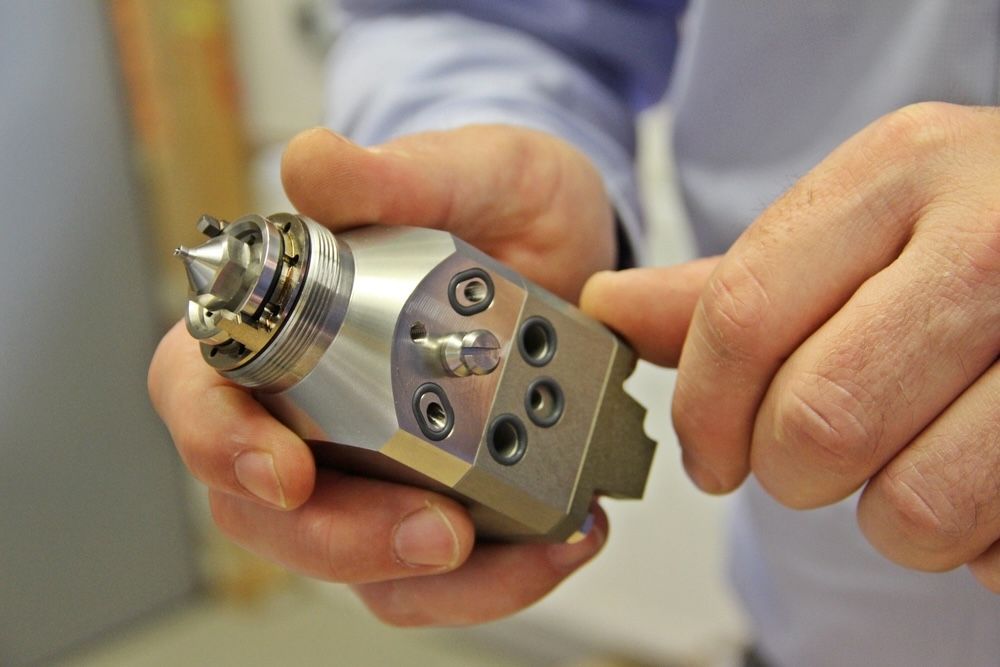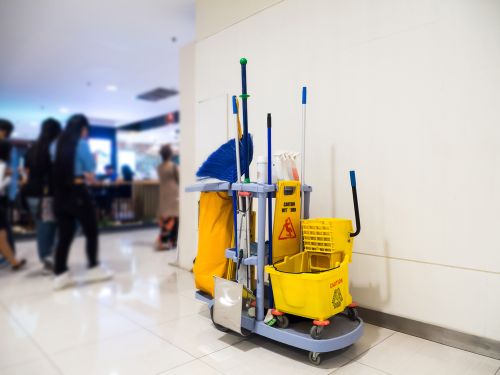Electrostatic Spraying in Commercial Cleaning

In the modern world of commercial cleaning, efficiency and effectiveness are paramount. As businesses and public spaces increasingly prioritize cleanliness to ensure the safety and well-being of employees, customers, and visitors, new technologies are emerging to meet these growing demands. One such innovation that has made significant strides in recent years is electrostatic spraying, a technique that offers a more comprehensive and efficient approach to disinfection. This technology has been particularly valuable in high-traffic commercial areas, including offices, educational institutions, healthcare facilities, and retail spaces, where cleanliness directly impacts the health and productivity of occupants.
What Is Electrostatic Spraying? Breaking Down the Science
At its core, electrostatic spraying is a method of applying disinfectants, sanitizers, or cleaning agents using a device that gives the solution an electrical charge. When the cleaning agent is sprayed, the charged particles are attracted to surfaces, effectively wrapping around them. The technology works by leveraging the principles of attraction between positively charged particles and negatively charged surfaces, allowing the disinfectant to cover even the most complex and hard-to-reach areas.
The mechanism behind this is similar to how static electricity works. Imagine rubbing a balloon on your hair, and then watching as the balloon picks up small pieces of paper from a table — electrostatic spraying functions in a similar manner, except on a much larger and more sophisticated scale. The positively charged droplets actively seek out and adhere to surfaces, ensuring that the entire object or area is uniformly coated. This feature is particularly valuable when cleaning large commercial spaces where it would otherwise be time-consuming and labor-intensive to ensure that every inch is properly disinfected.
Moreover, the equipment used for electrostatic spraying has evolved over the years. Early models were bulky and difficult to maneuver, but advancements in technology have led to the development of more portable and user-friendly devices. These modern sprayers are lightweight, battery-powered, and come with adjustable nozzles, allowing cleaning teams to fine-tune the droplet size and spray pattern based on the specific needs of the area being treated.

Why Is Electrostatic Spraying So Effective? The Key Advantages
The effectiveness of electrostatic spraying lies in its ability to deliver a more thorough and even application of cleaning solutions compared to traditional methods. One of the primary reasons it is so effective is the technology’s ability to provide 360-degree coverage. Unlike manual cleaning, where there is always the risk of missing certain spots — especially in hard-to-reach areas — electrostatic spraying ensures that the disinfectant clings to all surfaces, including those that are irregularly shaped or obscured from view.
This comprehensive coverage is particularly crucial in environments where hygiene is critical, such as hospitals and food service areas. Traditional cleaning methods, while effective in some respects, often fall short when it comes to reaching corners, crevices, and the undersides of surfaces. In contrast, the charged particles in electrostatic spraying are drawn to surfaces from all angles, significantly reducing the likelihood of germs or contaminants being left behind.
Another key advantage of electrostatic spraying is the reduction in the amount of disinfectant or cleaning solution required. Because the particles are evenly distributed across the surface, there is minimal wastage, and cleaning teams can achieve maximum coverage with less product. This not only lowers costs but also aligns with sustainability goals, as fewer chemicals are released into the environment. Furthermore, the fine mist created by electrostatic sprayers allows for faster drying times, meaning that spaces can be reoccupied more quickly, minimizing downtime for businesses.
Additionally, electrostatic spraying enhances the safety and health of cleaning staff. By reducing the need for direct contact with potentially contaminated surfaces, it lowers the risk of cross-contamination and exposure to harmful pathogens. The hands-off approach, combined with the use of personal protective equipment (PPE), provides an added layer of protection for cleaning professionals, who are often on the front lines in maintaining cleanliness and hygiene.

Applications in Commercial Cleaning: Tailored Solutions for Different Sectors
Healthcare Facilities: Infection Control at Its Best
In healthcare settings, where infection control is paramount, electrostatic spraying has become an invaluable tool in the fight against hospital-acquired infections (HAIs). The healthcare environment is one of the most demanding when it comes to cleaning, as it involves not only regular surface cleaning but also the disinfection of high-touch areas that are prone to contamination. These areas include patient beds, medical equipment, handrails, door handles, and shared spaces like waiting rooms and restrooms.
Electrostatic spraying offers a solution that is both time-efficient and highly effective, ensuring that all surfaces are properly disinfected between patient visits or shifts. Given the sheer volume of people moving through hospitals and clinics daily, traditional cleaning methods are often insufficient in keeping up with the demands. Electrostatic sprayers can be used to quickly and efficiently disinfect large areas, such as operating rooms, intensive care units, and emergency departments, without requiring significant interruptions to healthcare services.
Moreover, electrostatic spraying is particularly effective in addressing the challenges posed by multidrug-resistant organisms (MDROs), which are a growing concern in healthcare settings. By ensuring thorough coverage of disinfectants, this technology helps reduce the risk of surface transmission of pathogens, contributing to a safer environment for both patients and healthcare workers.
Educational Institutions: Creating a Safe Learning Environment
Schools and universities are another sector where electrostatic spraying has found widespread use. Educational institutions are characterized by high levels of foot traffic and frequent interactions between students, faculty, and staff, making them hotspots for the spread of germs and illnesses. Classrooms, cafeterias, gymnasiums, and libraries are just a few of the many spaces that require regular and thorough cleaning to maintain a healthy learning environment.
Electrostatic spraying is particularly effective in educational settings because it allows for the rapid disinfection of large areas, such as classrooms and common spaces, with minimal disruption to daily activities. The technology can be used to disinfect surfaces like desks, chairs, door handles, and shared equipment, ensuring that germs are eliminated before they can spread throughout the student population. This is especially important during flu season or in the event of a contagious outbreak, where quick and comprehensive disinfection is necessary to prevent widespread illness.
Additionally, many educational institutions are embracing green cleaning practices, and electrostatic spraying aligns with this trend by reducing the amount of chemical disinfectants needed. By using environmentally friendly disinfectants in conjunction with electrostatic spraying, schools can maintain high cleanliness standards without compromising on sustainability.
Office Spaces: Keeping Up with the Hybrid Work Model
As more businesses adopt hybrid work models, with employees splitting their time between home and the office, maintaining a clean and safe workspace has become more challenging. Office spaces, particularly shared areas such as conference rooms, break rooms, and lobbies, require frequent disinfection to ensure that employees feel safe and comfortable returning to work. Electrostatic spraying offers a solution that can meet these demands without disrupting the flow of work.
One of the primary benefits of electrostatic spraying in office settings is its ability to disinfect large areas quickly, allowing cleaning teams to work efficiently during off-hours or in between shifts. The technology is particularly well-suited for cleaning high-touch surfaces like keyboards, desks, phones, and elevator buttons, which are common sources of germ transmission in office environments. By ensuring thorough and even coverage of disinfectants, electrostatic spraying reduces the risk of illness spreading among employees, leading to fewer sick days and higher productivity.
In addition to its health benefits, electrostatic spraying also helps businesses maintain a professional appearance. A clean and well-maintained office not only promotes employee well-being but also leaves a positive impression on clients and visitors. The technology's ability to deliver superior cleaning results with minimal downtime makes it an attractive option for businesses looking to optimize their cleaning protocols in a post-pandemic world.

The Benefits of Electrostatic Spraying: Efficiency, Sustainability, and Safety
While electrostatic spraying offers a host of advantages, its benefits can be broken down into three main categories: efficiency, sustainability, and safety. These factors make the technology an attractive option for businesses and institutions across various sectors.
Efficiency: Electrostatic sprayers cover more surface area in less time than traditional cleaning methods, making them ideal for large commercial spaces like offices, schools, and healthcare facilities. The technology allows cleaning teams to disinfect entire rooms, including difficult-to-reach areas, without needing to manually wipe down every surface. This not only saves time but also ensures that spaces can be reoccupied quickly, minimizing downtime and disruptions to operations.
Sustainability: By reducing the amount of disinfectant needed to achieve full coverage, electrostatic spraying supports sustainability initiatives. Businesses and institutions can lower their chemical usage, which not only reduces costs but also minimizes their environmental impact. Additionally, many electrostatic sprayers are compatible with eco-friendly disinfectants, further contributing to greener cleaning practices.
Safety: The hands-off approach of electrostatic spraying reduces the risk of cross-contamination and exposure to harmful pathogens. Cleaning professionals can apply disinfectants from a distance, without having to come into direct contact with potentially contaminated surfaces. This is especially important in environments where cleaning staff are regularly exposed to germs, such as healthcare facilities and schools. The reduced chemical usage also contributes to a safer work environment, as there is less risk of inhaling or coming into contact with harsh cleaning agents.
Challenges and Considerations: Training and Proper Usage
Despite its many benefits, electrostatic spraying is not without its challenges. One of the key considerations for businesses and institutions looking to adopt this technology is the need for proper training. While the equipment itself is relatively easy to use, cleaning teams must be trained on how to handle the devices safely and effectively. Improper use can result in uneven coverage or damage to sensitive surfaces, particularly in environments with electronics or delicate materials.
Additionally, electrostatic spraying is most effective when used in conjunction with regular cleaning protocols. While the technology excels at disinfecting surfaces, it may not be as effective on heavily soiled areas. Pre-cleaning is often necessary to remove dirt and grime before applying the disinfectant. Businesses should also ensure that they are using the right type of disinfectant for their specific needs, as not all chemicals are suitable for use with electrostatic sprayers.
Conclusion: The Future of Electrostatic Spraying in Commercial Cleaning
As the demand for cleaner, safer environments continues to grow, electrostatic spraying is poised to become a staple in the commercial cleaning industry. Its ability to deliver comprehensive, efficient, and sustainable cleaning solutions makes it an ideal choice for businesses and institutions looking to enhance their cleaning protocols. Whether used in healthcare facilities, schools, offices, or retail spaces, electrostatic spraying offers a powerful tool for maintaining high standards of hygiene and cleanliness in a world where safety and health have never been more important.
Check more articles on our blog

Ensure Sparkling Bathroom with Daily Office Bathroom Cleaning Checklist

Top 10 Cleaning Companies in Düsseldorf, Germany

Useful Tips On How To Maintain A Clean And Productive Office
